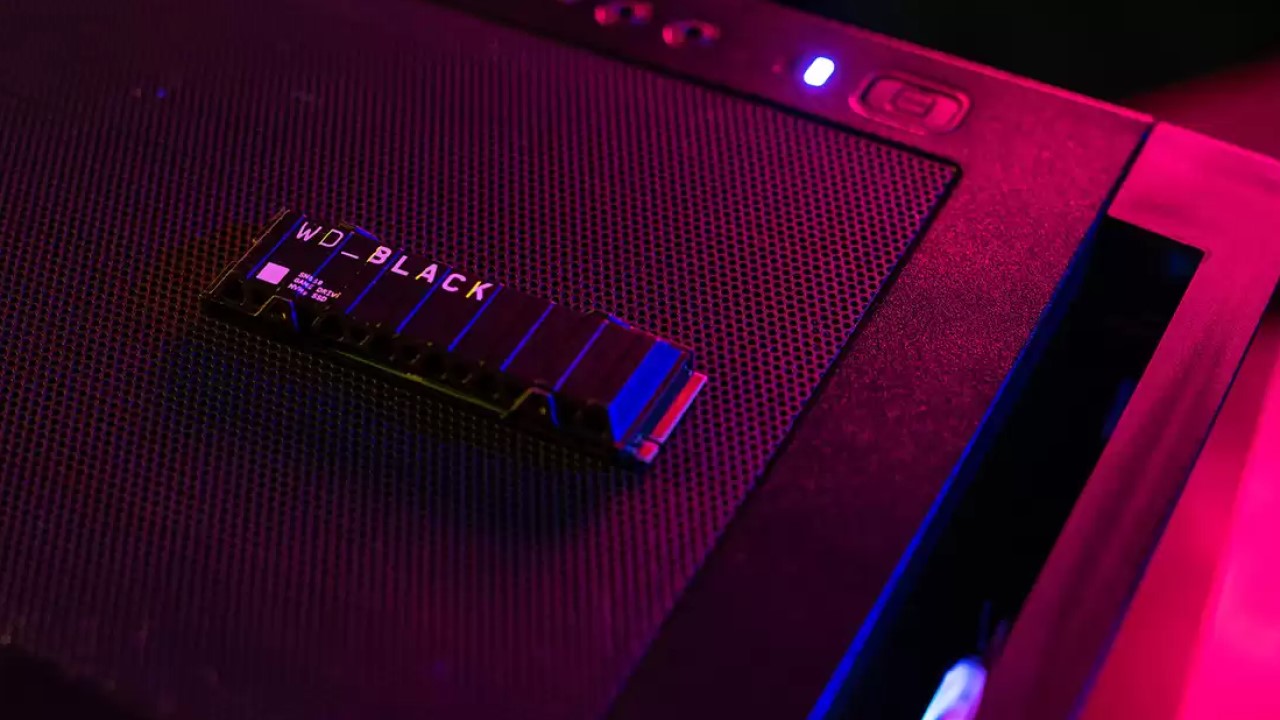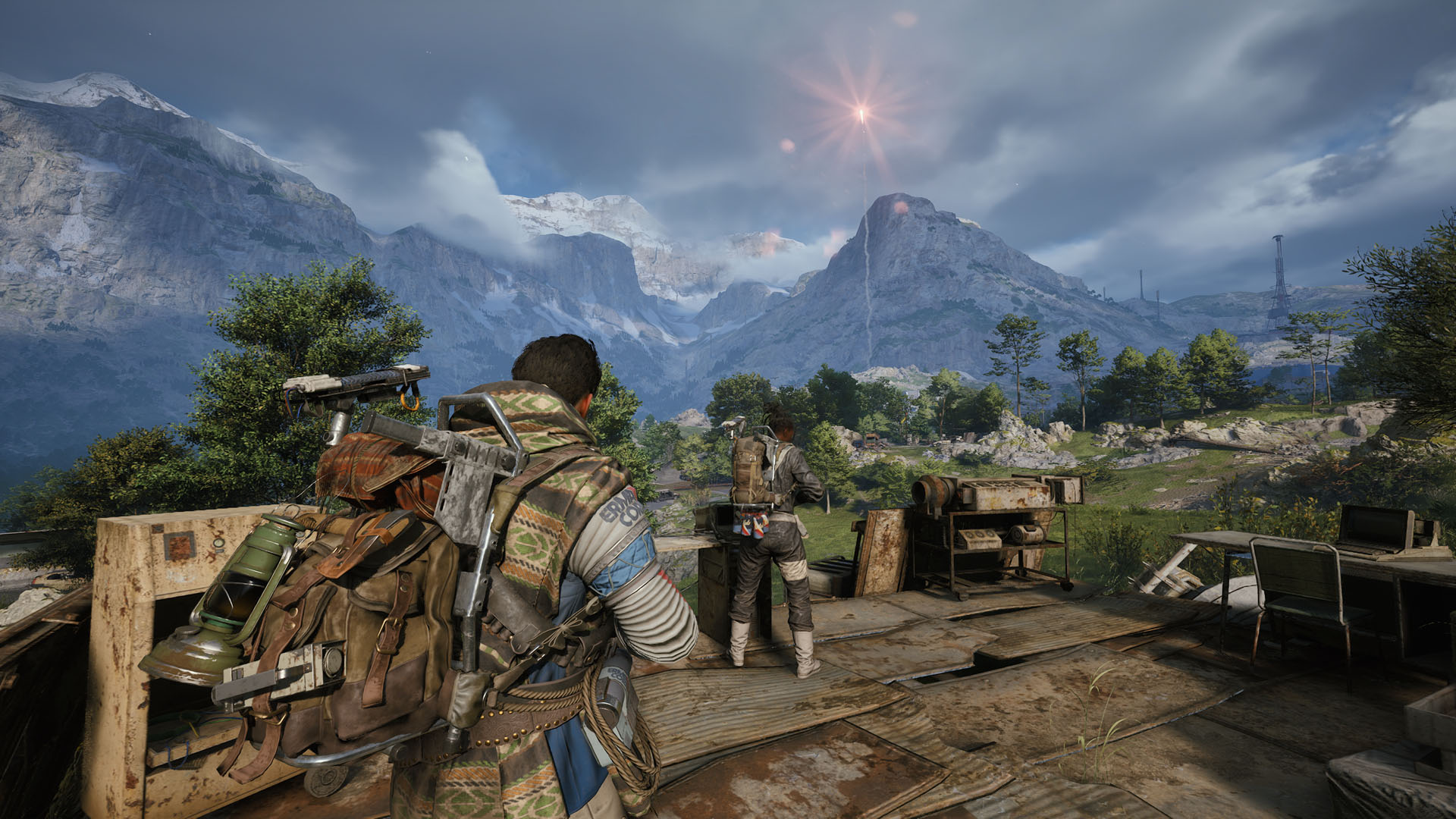GamesRadar+ Verdict
An uber-fast SSD with a hefty price to match
Pros
- +
Excellent all-round performance
- +
Exceptional 4K QD1 write speed
- +
Large SLC cache
Cons
- -
Heat sink is optional
- -
Can get hot under sustained loads
- -
Expensive, very expensive
Why you can trust GamesRadar+
Once the final frontier of solid-state PC performance, SSDs are now pretty much universal. What’s less well established is just how much difference comparative SSD performance makes for gaming as opposed to other workloads.
That’s the context for the shiny new WD Black SN850 SSD. By the numbers, this thing absolutely rips, and is definitely a contender for best SSD for gaming. It’s a PCIe 4.0 drive with some serious performance specs, including 7GB/s peak sequential performance and up to 1 million IOPS. Scary, but in a good way.
Of course, performance on the best gaming PC (or best gaming laptops, for that matter) doesn’t necessarily benefit from ever-faster SSDs. It’s actually pretty hard to tell from measures like game loading times whether there’s a plain old SATA SSD or the latest M.2 NVMe beast under the hood, for example.
The reasons for all this are pretty technical, but boil down to the fact that storage bottlenecks involving IO requests and CPU load tend to be the limit to performance, not raw bandwidth. The catch is that this is set to change thanks to a new next-gen-games-console derived technology for Windows known as DirectStorage. Due later this year, it might just give the likes of the new WD Black SN850 (or the WD AN1500 to namedrop another belter) real purpose when it comes to PC gaming performance.
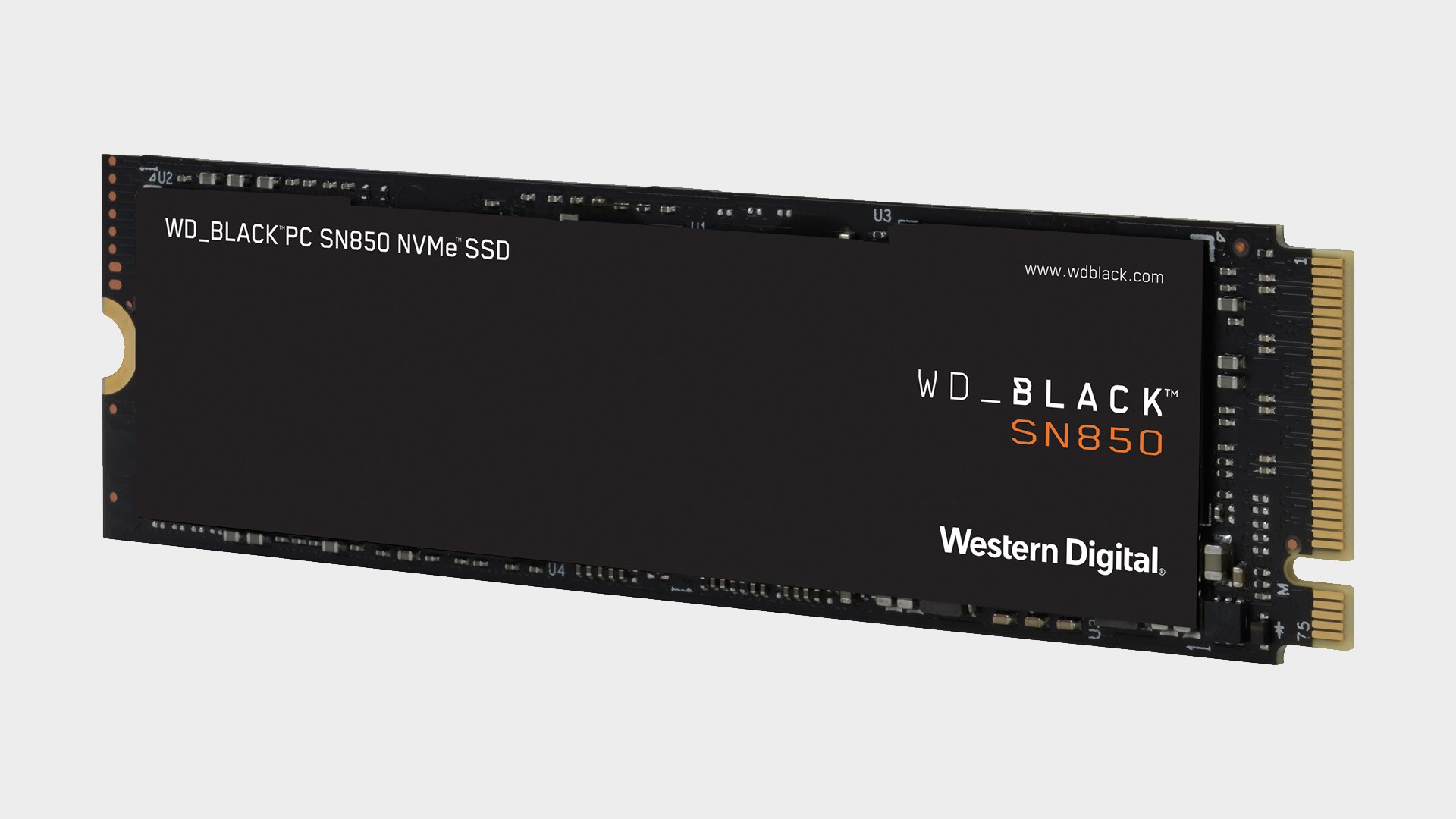
Design & Features
Tested here in 1TB capacity, the WD Black SN850 is also available in 500GB and 2TB variants. All three are M.2 NVMe SSDs with quad-lane PCIe 4.0 interfaces. So, they’re right at the bleeding edge of PC storage technology.
Peak sequential performance is quoted at 7,000MB/s read and 5,300MB/s write for this 1TB model. As for random access performance, peak performance is pegged at 1 million read IOPS and 720K write IOPS. Underpinning all that is a WD/Sandisk NVMe G2 controller chipset, SanDisk’s 96L 3D TLC flash memory, and 1GB of DDR4 DRAM.
The more detailed configuration includes up to 300GB of the 1TB of flash memory dynamically set aside to operate as a fast SLC cache, a feature known as nCache in WD nomenclature. As for endurance, WD backs the drive for five years and 600TB of writes, which is enough for 100GB of data written daily, wait for it, 16 years. Yeah, that should have you covered.
Weekly digests, tales from the communities you love, and more
As with most M.2 SSDs, physically the WD Black SN850 is largely unremarkable. Still, it is worth noting the SN850 doesn’t have much by way of cooling as standard, despite the fact heat dissipation can often be an issue for sustained SSD performance. A heat sink is available as a cost option.
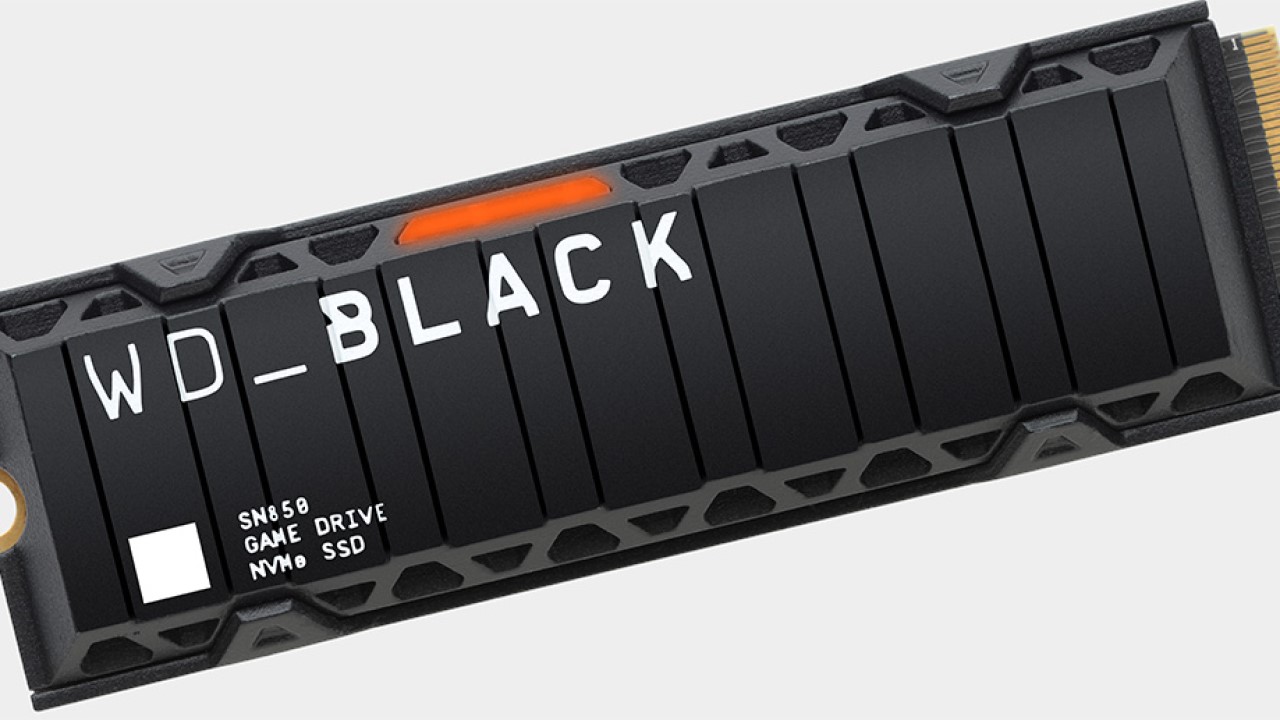
Performance
Speaking of performance, this drive does a pretty decent job of blitzing our benchmarks. It isn’t necessarily the fastest M.2 drive on the market by every measure. The likes of the Samsung 980 Pro and Sabrent Rocket 4 Plus have the edge by some metrics. But the SN850 puts in some very nice numbers: 6996 MB/s read and 5205 MB/s write on CrystalDIskMark, to provide some context.
Peak performance is in line with the claimed specs, with sequential reads of a whisker under 7GB/s and writes around 5.2GB/s. As nice as those numbers are, it’s actually the 4K performance that most impresses. 4K queue depth one read speed is right up there with the Samsung 980 Pro at 81MB/s, while the 250MB/s write speed for the same test is the fastest we’ve ever seen.
As for sustained performance, it drops off right where you’d expect given the SLC cache provision, with sequential write throughput roughly halving after around 300GB of data. That ought to be plenty for most users.
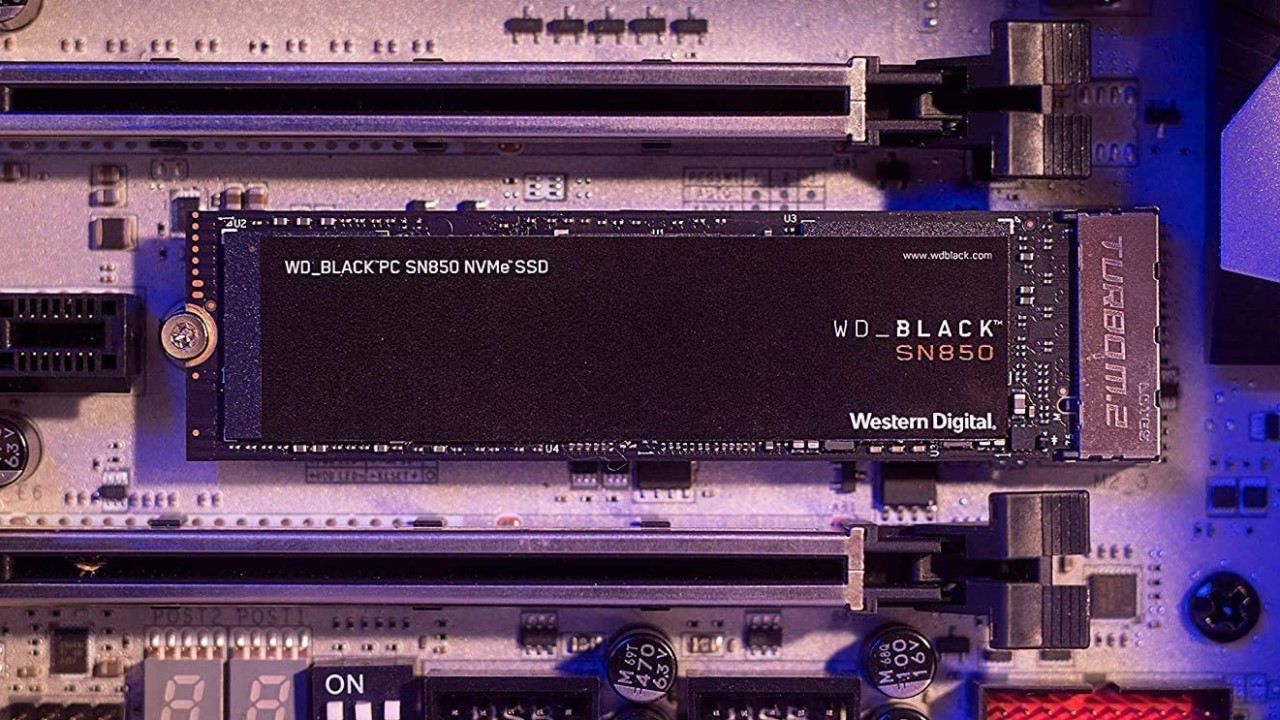
Overall - should you buy it?
No question, the WD Black SN850 is up there with the very best PCIe Gen 4 M.2 SSDs. Ultimately, you’d be hard-pressed to tell the difference between this SSD and the Samsung 980 Pro or Sabrent Rocket 4 Plus; they’re all hella quick. The only problem is that’s true of a lot of cheaper PCIe 3.0 drives, too. In the real world, you’re not going to notice games loading tangibly faster with this SSD versus a PCIe 3.0 drive that’s either cheaper or offers more storage for the same money.
Whether that changes with the arrival of DirectStorage, we’ll have to wait and see. Money no object, we have no hesitation recommending this SSD: it really is fast enough to put the frighteners on Samsung and co, but not exactly a bargain. But, having said that, money is very much an object for most people. So as good as it is, we’re not entirely sold on the WD Black SN850’s value proposition.
A serious dissertation on the finer points of input lag and overshoot followed by a forensic examination of AI-accelerated temporal upscaling. Such is a routine day in the working life of long-time tech wordsmith, Jeremy Laird. Along with GamesRadar, Jeremy’s 15-year back catalogue includes a host of tech and gaming outlets, including TechRadar and PC Gamer, not to mention contributions to mainstream media from the Independent to the Evening Standard. Complimenting Jeremy’s debilitating addiction to all kinds of digital hardware, he is also afflicted by an obsession with and a significant occupational sideline in cars and automotive technology.
